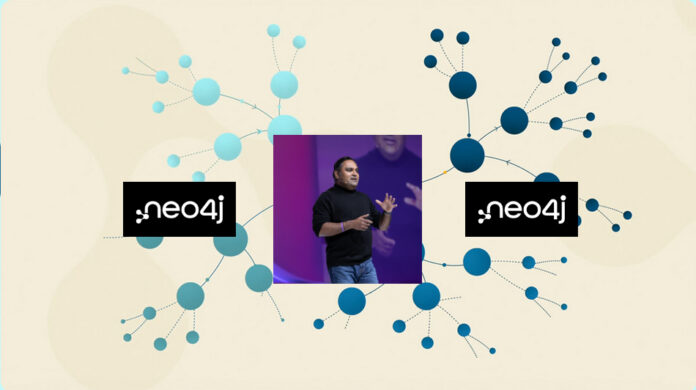Neo4j has launched Infinigraph, a graph database that can run operational and analytical workloads together in a single system at 100TB+ scale.
A Neo4j knowledge graph database systematically stores nodes and relationships between different data entities instead of tables or documents, which customers can then analyse. Its products are used by 84 of the Fortune 100 enterprises. Infinigraph now enables IT teams to run both analytic and operational workloads in the same system “at unprecedented scale, without ETL (Extract, Transform and Load) pipelines, sync delays, or redundant infrastructure.” It claims that “Teams can detect fraud and analyze fraud rings from the same dataset. They can generate real-time customer recommendations while analyzing decades of customer data and behavioral trends.”

Sudhir Hasbe, Neo4j’s President for Technology and Chief Product Officer, stated: “Infinigraph sets a new standard for enterprise graph databases: one system that runs real-time operations and deep analytics together, at full fidelity and massive scale. We’re giving builders the power to create intelligent systems that transform data into knowledge, scale without limits, and solve their biggest data challenges – without added complexity or cost.”
The the 2024 Gartner Magic Quadrant for Cloud Data Management Systems said: “Gartner continues to see a convergence of operational and analytical systems. This may be through collaboration rather than full integration. “This is being achieved by three viable approaches: (1) One database and one copy of data; (2) one database but with two engines, one row-based, one column-based, integrated and synchronized; (3) two or more databases that are designed to synchronize and work together.”
Neo4j is using the first approach. It says Infinigraph is the result of a 4-year effort to scale transactional and analytical graph workloads without sacrificing performance, structure, or ease of use. It shares a graph’s “property data across different members of a cluster. The graph stays logically whole, queries behave as expected, and applications scale without code changes or manual workarounds.”
The claimed benefits include:
- 100TB+ horizontal scale with zero application rewrites
- High performance across massive transactional and analytical workloads
- High availability across data centers through autonomous clustering, which detects and recovers from failures automatically
- No ETL pipelines, sync delays, or duplicated storage
- Preserved graph structure for real-time traversal, even at scale
- Full ACID compliance for consistent enterprise-grade data integrity
- Pricing designed for scale, with compute and storage billed separately, for greater control over cost and deployment flexibility.
Customers “can deploy replicated graphs for high availability and read scalability, federated graphs with Fabric for querying disconnected graphs, or sharded graphs with Infinigraph for seamless scalability.”
They “can now embed tens of millions of documents as vectors, storing them directly in the graph to power context-aware assistants and semantic search.”
Neo4j says “Teams can detect fraud and analyze fraud rings from the same dataset. They can generate real-time customer recommendations while analyzing decades of customer data and behavioral trends.”
Infinigraph “can power autonomous agents, compliance systems, and transactional applications on one consistent source of connected truth.”
A Neo4j blog should be live and provide more details.
The product is available now as part of Neo4j’s Enterprise Edition and will soon be available in AuraDB, Neo4j’s fully-managed, cloud-native database.








